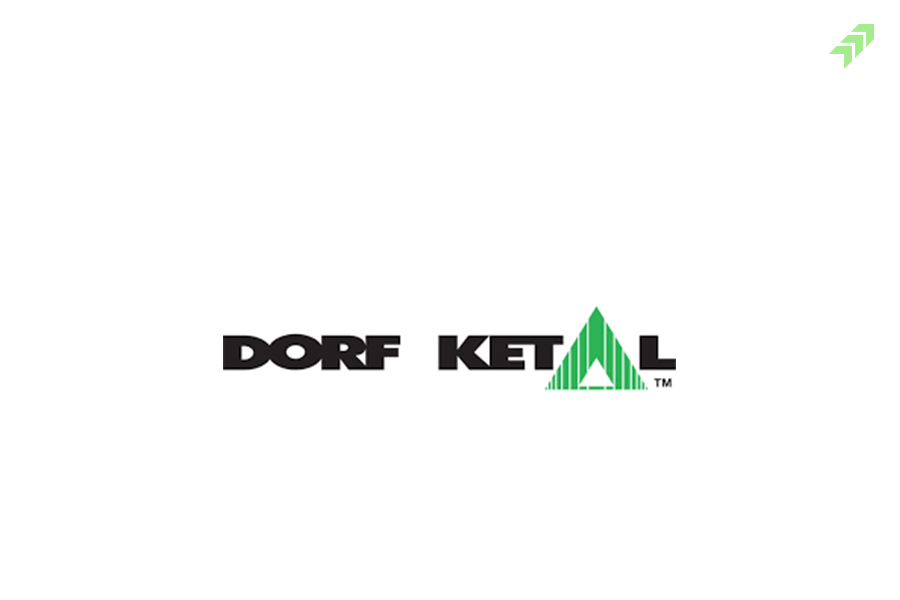In the stock market, apart from economy and industry-related news, various trading-related factors affect the movement of the index. GDP data, Industrial production growth, purchasing manager index, employment data, inflation and the central bank's monetary policy are the leading factors that encourage or discourage the stock market to move further.
While on the other hand, any distress or negative growth is also responsible for the downfall of the main indices like Nifty and Sensex. These are the fundamental factors like corporate actions affects the stock market moves and have long-term effects.
Also Read: Difference Between Fundamental Analysis and Technical Analysis
While on the other hand, a few technical factors also influence the stock market direction. Though, these technical factors have short-term effects but are one of the very essential parts of technical analysis and intraday trading.
Also Read: What is Intraday Trading: Is it Profitable, How to Learn& Earn Money
Short covering is one of them, maybe you have heard about this term, so let's find out what is short covering, how it works, what happens after short covering, what happens after short covering rally and how to identify the short covering rally with examples.
What is Short Covering in Share Market?
Short covering is the action that comes because of the obligation to cover the position created by short-selling. Usually in the intraday and F&O segments or derivatives market, traders do the short-selling of the stock they don't have. And because of being unable to make the delivery of shares to buyers, they have to cover their short selling and close the position.
Also Read: Derivatives: Types, Participants & Basic Terminologies in Market
Short covering means in the stock market is closing the open option that has been created to short certain shares of the company. In stocks, short covering involves the purchasing of stock that has been short-sold and at the same time returning the same stocks to whom from where it has been borrowed. Short-covering is the reverse action of short-selling.
Also Read: What is Short Selling & How Does it Work: Is it Good or Bad
Short Covering Example
Suppose a trader expects the shares of a company XYZ is going to fall in the near term. Hence, he decided to short 1000 shares of that company at Rs 200 each.
Now as per the expectations of the trader, the price of the stock declined and trading at Rs. 150, here traders buy back the same shares in the same quantity is called the short-covering. Here, traders earn a profit of Rs. 50,000 by short-selling trade.
What is Short Covering in Stocks?
Short selling and short-covering in the stock market can happen either in individual stocks or indices that are traded through the underlying index in the derivatives market. When the short positions created in the future of the underlying index and position are covered in the same future index, then it is known as short-covering in the indices.
While on the other hand, short covering in stocks means when the same short position is created and covered in any individual stock. In the cash market if you created a short position in a stock for intraday, then you have to close or cover your position on the same day before the end of the trading hours, otherwise, the exchange will automatically square off your position and whatever loss or profit will be transferred into your account.
Also Read: How to Do Intraday Trading: Best Stocks, Charts & Strategies
How Does Short Covering Work?
Short covering simply works in speculation that the price of a particular stock is going to fall for a few days and traders “Make hay while the sun shines”. Yes means to say, traders take advantage of such falls and try to make profits by short-selling in the stocks. As in such a falling market, highly volatile stocks fall at more speed compared to others.
Also Read: VIX India: How it Works, Calculated & Used for Share Trading
As traders take advantage of the falling market by creating short positions in such stocks that are likely to fall. And when they cover their position in that stock, it is short covering. In short-covering it is not necessary for traders to earn a profit, if the stock bounces back and rose instead of falling as per the expectations, they might also incur losses too.
What Happens After Short Covering?
When traders start covering their short positions they don’t see whether it is profit or loss, they have to square off their positions otherwise exchange will do this at the end of the day (for intraday trading) or on the last date of F&O contract expiration.
Also Read: 7 Biggest Mistakes To Avoid While Doing Intraday Trading
In this short-covering process, traders book the profit of whatever they are earning, and if they are incurring a loss, they try their best to minimize the losses. And when there is a huge number of buying starts in the market, the entire market moves up making the market and short covering stocks in the green zone, the resulting market ends higher.
Apart from mandatory closing the short selling positions, traders also want to cash their positions due to the high-interest cost that has been borrowed by them for such trading. When stocks don't fall as much as expected by the traders, they exit from such positions either in loss or whatever amount of profit they gain holding such positions. Basically, when short-covering starts market or individual stocks move higher and keep the market in the green zone.
Short Covering Means Bullish or Bearish
As we have already told you, short covering is the reverse action of buying the stocks that have been shorted earlier in the speculation of a fall in price. And when traders start covering their positions at large scale of buying across the market.
And when a huge number of buyers jump into the market, then due to large volume of trade in the market indices move up and probably ended in the green zone. This kind of short-term rally doesn't mean the market is in a bullish phase. For a bullish market, there are certain parameters and a technical indicator that has to be analyzed to evaluate whether the market is bullish, bearish or it is just a short-term rally.
Also Read: Technical Indicators that Every Trader should be aware of
Short-selling positions are created usually when traders see the market is likely to go down in the upcoming days. This also doesn't mean the market is bearish, but you can say for the short-term phase there could be a downfall in the market and traders just want to take advantage of such downfall and earn some extra money through short-selling in stocks or F&O.
Also Read: Best Option Strategy for Bearish Market: 7 Option Strategies
However, when there is a continued to fall in the market, most of the sectors, stocks including large-cap, mid-cap and small-cap indices making new lows every day, sellers are dominating against the buyers, then it can be considered market is in a bearish phase.
How to Identify Short Covering Rally?
A short covering rally is also known as a short squeeze which happens when there is a rise in the covering activity. When a stock's price increases suddenly, then short sellers rush to square off their positions before their losses escalate further.
When stocks move in the direction of either way in short selling or intraday trading, traders make positions in stocks or the F&O market with margin money that is provided by their brokers. And when margin call is short-fall and traders unable to maintain and avoid margin penalty, they square off their positions resulting, in the market moving upwards.
Also Read: What is F&O Margin Penalty: SEBI Rules & How to Avoid it?
Using the Chart Patterns
To identify the short covering rally, you can see and analyze the chart patterns technically and use other tools and techniques used in technical analysis. Usually, in short covering, charts show rapid and firmed movement off of the lows and will not move sideways instead shows the downward movement in the stock price or market index.
Analyzing the candlestick chart patterns, if traders start buying new stocks from the purchasing stocks after the lows, it doesn't affect the stock chart in the same manner. If a trader is buying new stock from purchasing stock after the lows, it does not affect the stock charts in the same way.
Use the Change in Open Interest
One of the best ways to identify the short covering rally is to use the change in the open interest with the price change. Basically, traders trading in short-selling in the future and options, where a number of contracts bought or sold in lots size and each lot shows a certain number of shares that are visible as open interest in a particular stock.
Also Read: Nifty Open Interest: How Traders Use Change in Nifty OI for Data Analysis
This open interest shows the number of buyers or sellers who are interested in that stock. And when a "open interest decrease and stock price increase, it means a reduction in open interest along with the rise in price typically indicates it is short covering”.
Example to Know Short Covering Rally
Let’s take an example of how to use open interest to identify the short-covering rally. Suppose, if a company has a total of 60 million equity shares outstanding in the market, and 2 million have been sold short, then it would have a short open interest of:
2 million/60 million = 0.03 x 100 = 3.3%
And as per the stock market experts, anything more than 20% would be considered as open interest or short selling. And evaluating the potential risk to short sellers, it is important to analyse the figure of changes in this figure.
An increase in short open interest signals a bearish trend, while a decrease in open interest indicates a bullish sentiment. And “When short selling open interest starts falling and market or stock price start rising, you can see a short covering rally starts”.
Wrapping-up
Basically, short covering is the opposite action of short-selling that traders do when they see the market of any particular stock is likely to fall, they short it and then buy at the lower levels to cover their open option and enjoy certain profits from this trading.
Also Read: Options Trading: How it Works, Example & How to Trade
Short-selling and short-covering are possible only in intraday trading or derivatives markets where traders sell future or option chain contracts. In both types of trading, there is no physical delivery of shares that takes place after executing the transactions.
Also Read: NSE Option Chain Analysis : How It Works & What Does Indicate
All the traders or contracts either square off traders or at the end of the day for intraday trade and at the end of the date of expiry all the positions are closed with the respective loss and profits transferred into the account of the traders. Hence, trading in such markets is very risky and complicated too, especially since retail clients don't have an idea of the stock market.
Also Read: How to Select Stocks for Intraday: 10 Tips to Pic Best Stocks
Here, Moneysukh comes with a one-stop solution for all types of clients to provide them with a seamless trading platform for wide-ranging markets. It is currently providing trading and investing solutions for equity, commodity and currency with trading account and demat account facilities at negligible charges. Moneysukh also offers the best trading plans for retail customers looking for trading in intraday and F&O segments at the lowest brokerage.
Also Read: Trading or Investing Which is Better and More Profitable
So, what are you waiting for, apply for the demat account here, and enjoy unlimited trading into various segments. Here you will also get daily trade tips and stock recommendations from a team of highly skilled experts and market analysts. These market experts will help you in booking the profits at the right levels or suggest you the best stocks or F&O trading Strategies as per the market conditions to make sure you earn the highest returns at minimize your losses.



















No comment yet, add your voice below!